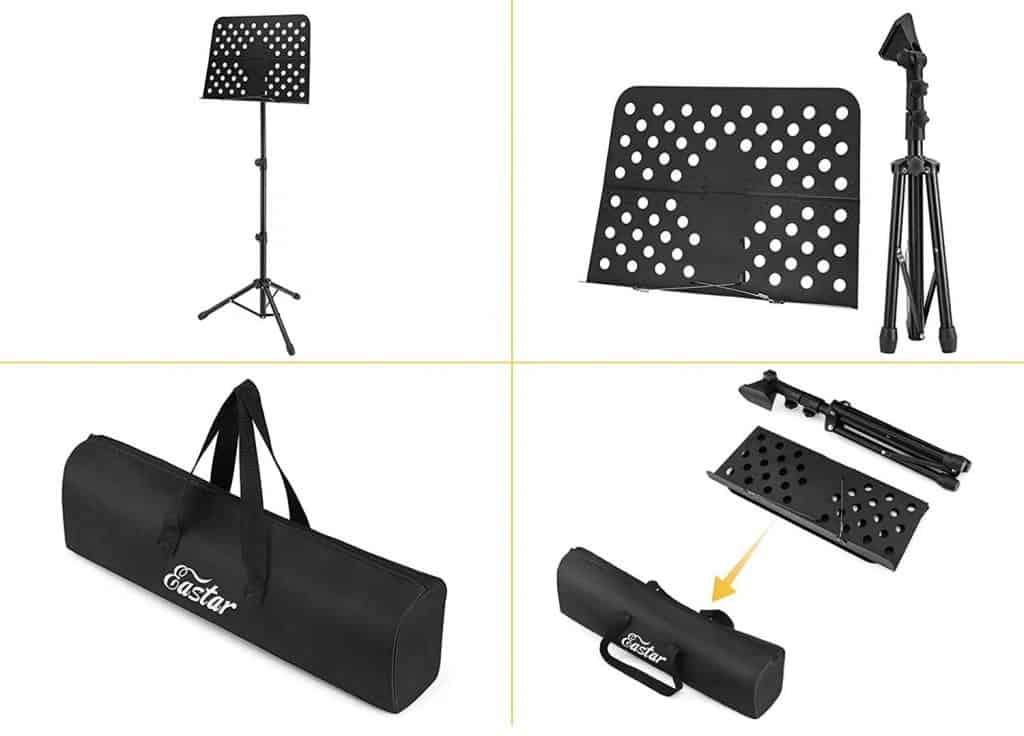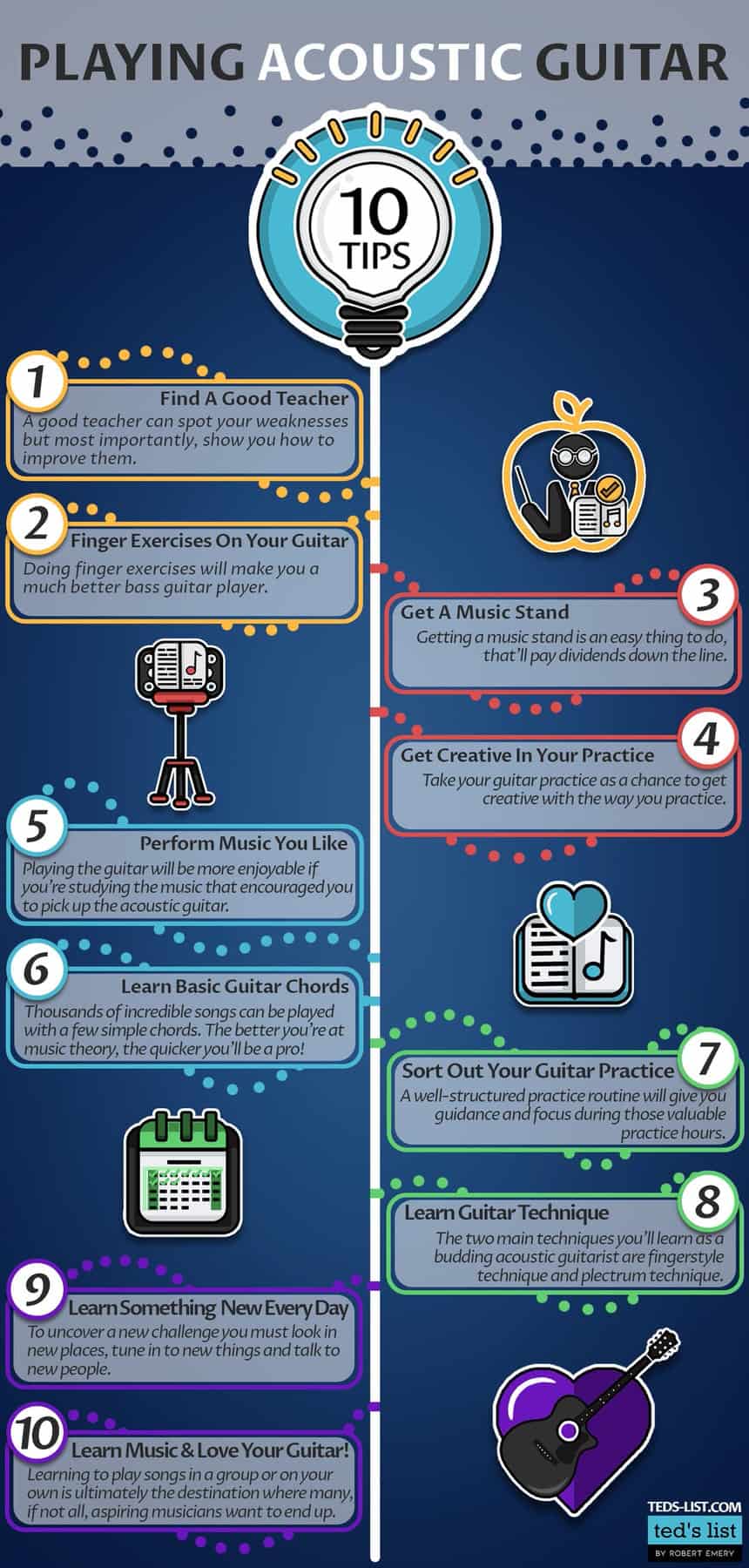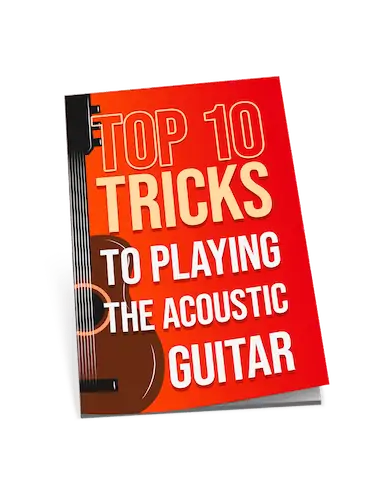If you’re after some top-notch tips on playing the acoustic guitar, you’ve come to the right spot! Classical guitar is not only about strumming a few chords; it is a beautiful art that weaves melody, rhythm, and harmony together. Readers will journey into a world filled with the gentle strumming of strings, where every pluck tells a story and the air dances to the lively rhythm. Without a doubt, anyone with a passion for music will relish in exploring these invaluable tips, enhancing their skills and appreciation for this grand instrument.
Ted’s List has some great tips to make learning classical guitar fun and rewarding. Learning how to place your fingers, finding a good teacher, and taking care of your instrument are all important steps to improving your playing.
Don’t miss out on these top tips – your guitar is waiting for you, so let’s start playing and mastering the art together!
Having The Right Guitar Teacher Makes A Difference
If you answered yes to most or all of these questions, you have a great teacher who is appropriate for you and your situation.
But what if you need help finding that perfect guitar teacher? Where should you look?
First, get recommendations from people in your area. Look on Facebook and Linkedin to see who the local guitar teachers are and what their students say about them.
If you still need help finding a teacher, join the Ted’s List VIP Facebook Group. Many guitar teachers and players there can help you.
Don’t worry if things don’t work out with a teacher. You can always find another one! You never know for sure how well two people will connect, so give it a try!
Finger Exercises On Your Guitar
Tip number 2 is important for all guitarists, although they may seem mundane at times… Doing finger exercises – even for a few minutes each day – will make you a much better player.
All good acoustic guitarists need to make the most of their hands by having as few weaknesses and technical blind spots as possible.
Finger exercises are like general conditioning for athletes. Learning to play them will help you progress faster. Practicing them regularly will make learning songs and playing difficult chords easier.
You won’t play a finger exercise as a whole piece of music, but that’s not the point. They give you a general level of skill that you can use in the music you play.
Try to do these exercises once a day. They will strengthen your fingers, help you play faster, and improve everything from strumming to hand positioning on the fretboard.
Remember to use a metronome when you can as it helps a lot. When the exercises you’re doing become easy, find some harder ones. This is a guaranteed way to improve your technique and begin playing more complex pieces quickly.
Make Sure You Get The Perfect Music Stand
Getting a music stand is undoubtedly the easiest and, thus, the most convenient tip in this article!
A quality music stand not only promotes good posture while playing the guitar but also ensures your sheet music is within your line of sight. This means you can easily spread out multiple sheets, eliminating the need for uncomfortable page turns.
Learning to play guitar is challenging enough, so don’t make it more difficult with cheap equipment that breaks. It’s always worth getting something that’s well-built, and that will last longer.
Collapsible music stands are acceptable whenever you need a transportable one for gigs—and this is the brand we suggest for foldable stands; however, for learning at home, get something that won’t collapse every five minutes!
Sure, it costs a bit more initially, but it will be such a beneficial investment. Many good music stands can last as long as ten years, whereas a poorly built one can break in a few weeks.
Get Creative In Your Guitar Practice
Practice doesn’t just have to be scales and arpeggios, but it does need to be done regularly. If you’re bored with your current practice routine, get creative:
- Learn a new song every day for a week
- Learn one new minor chord per week for a month
- Write a short piece using the scales you know
- Use scales and arpeggios to figure out your favorite song
- Practice with friends and swap ideas
- Try difficult passages with a metronome
These ideas will give you a fresh perspective on your practice. When learning something new, start slowly, and you’ll eventually memorize it. Learning songs and challenging chords will help you progress faster.
Perform Music You Like On The Instrument You Love
Playing guitar is much more fun if you’re learning music that inspired you to start in the first place. Remember, you became a guitarist to make music!
This applies to beginners, intermediate, and advanced players alike: many guitarists, especially jazz musicians, practice learning music that motivates them.
Learning motivating music expands your repertoire, keeps you inspired, and ensures you never lose the joy of playing.
If you only practice technical exercises, you might become a skilled guitarist, but you’ll get bored quickly. You’ll know how to play, but you won’t love it!
However, you’ll associate playing with enjoyment if you can pick up your guitar after a hard day and unwind by playing your favorite songs. This feeling will keep you coming back to the guitar for more.
Learn Basic Guitar Chords
If you learn the simple C chord, you’ll know 25% of the chords for most songs! This means you could play that great song you found on Spotify or YouTube with just a little knowledge about chords.
Learning chords is part of learning music theory. It’s not essential for beginners, but the better you are at music theory, the faster you’ll go from beginner to pro!
On guitar, chords are played by learning fretboard shapes. Knowing frets, strings, and strumming patterns is guitar basics. Every beginner gets confused by this at first, so don’t worry!
The great thing about the guitar is that it’s a patterned instrument. Nearly every chord shape you learn can be moved to a different neck part to make a new chord. It’s part of understanding music theory.
Reading tips can help you learn acoustic guitar more efficiently. By using effective reading strategies, you can better understand sheet music and tablature, letting you master new songs faster.
Sort Out Your Guitar Practice
Learning guitar is fun. But in order to play well, you’ll have to practice well, and it’s tips like this that’ll help make the world of difference to your playing.
A structured practice schedule helps you focus during practice sessions. It ensures you save time figuring out what to practice or getting distracted.
- First, turn off your phone or put it on “Do Not Disturb.”
- Next, get comfortable. Have water or your favorite beverage ready.
- Then, structure your practice. Decide what to focus on, like tone, left-hand placement, or technique. Choose a specific goal for each session.
Remember, having many small goals to work towards will give you a sense of accomplishment and boost your motivation. Allocate time to each element you need to practice.
One of the best ways to help your practice is to video yourself. You can review your technique and see if you achieved your goals.
This will speed up your progress, help you spot common beginner mistakes, improve your technique faster, and develop a better sound. Out of all these tips for learning acoustic guitar, this one can make a huge difference quickly.
Learn Guitar Fingerstyle And Plectrum Technique
The two main techniques you’ll learn as a budding acoustic guitarist are fingerstyle technique and plectrum technique.
As the name suggests, fingerstyle technique involves using the fingers and thumb on your plucking hand (whichever hand you use to pluck the strings) to activate the strings.
Most acoustic guitar students find this technique quite natural. It involves using the thumb, index, middle, and sometimes ring fingers to play the strings.
Fingerstyle technique can be used to play many styles from pop, rock, soul, and singer-songwriter because it’s such a versatile technique.
Plectrum technique involves using a small piece of plastic known as a plectrum to pluck the strings.
It’s worth always stocking up on extra plectrums because no matter how carefully you keep track of them, sooner or later your plectrums will go missing. But the good news is they are cheap. I’d recommend buying a bulk load of these – they don’t break easily and look cool.
Discover Something Totally New Every Day
To start learning a musical instrument like the acoustic guitar is similar to going exploring. It only truly seems like it’s been worth it when you find a new challenge.
However, to uncover a new challenge you must look in new places, tune in to new things and talk to new people.
A great motivator for improvement would be joining a guitar community via a regular magazine, online forum, or YouTube channel. Our Ted’s List Facebook VIP Group has a lot of musicians that support each other; so come and join that.
A magazine, for example, will have new columns and tips for you to read every month and many of the writers give out small weekly lessons complete with completely new exercises to try and help you to improve.
Online message boards will have debates between different players on a wide range of subjects. Watch out though. These can get pretty heated sometimes!
And a decent YouTube channel will post brand new video lessons weekly for you to work through. If you haven’t tried it yet, take a look at Ted’s List YouTube channel, where we now have 100’s of video clips on all instruments.
Discovering something totally new will broaden your horizons whilst keeping you enthusiastic to further improve.
Learn Music And Love Your Guitar!
This might sound like a contrary point. Especially after I’ve spent large portions of this article stressing the importance of scales, chords, arpeggios, and the like. But don’t get me wrong. I’m not trying to say those things are bad.
What I’m saying is they’re stepping stones to something bigger.
To be able to play actual pieces of music.
Learning to play songs in a group or on your own is ultimately the destination where many, if not all, aspiring musicians want to end up.
Playing actual songs with others or performing solo gives you a new and challenging context to put yourself in. It’s a much harder test of your mettle but it’s also one that is far more rewarding in the long run.
You’ll learn the most by having this performance-based context to apply your hard-earned knowledge gained from hours of practice and you’ll have a great time entertaining your friends with the great songs you can play.
Playing acoustic guitar - top 10 tips
Summary
Learning to read music and practicing regularly are essential steps to mastering this beautiful instrument. It is always exciting to watch how these small habits can lead to significant improvements over time.
Incorporating posture and relaxation techniques ensures we can play longer and more comfortably. Having a skilled teacher to guide you can make a difference in your progress.
Here’s a quick list to remind you of the key points:
- Learn to read music
- Consistent practice
- Good posture
- Relaxation techniques
- Find a good teacher
Taking these steps seriously can transform your classical guitar journey. Remember, the most important thing is to enjoy the process.
Happy playing!
P.S. If you’re looking for more tips, we have created a 21 Guitar Tips For Beginners article that you’ll enjoy!
Do you want to share this infographic on your site? Use this code...
FAQ's
You can improve your acoustic guitar playing by practicing your barre chords, work independently on your fretting hand and learn techniques to become a better guitarist. But overall, practice is the element that’ll speed up your standard of playing.
You can get better at playing guitar by remembering the key things when you started playing. Practice regularly. Focus on technique. Read guitar tips like this, and remember to actually action them. But above all, enjoy yourself. If you have fun, you’ll keep on playing. In time you will get better!
Every guitarist should know that right from having your first guitar to becoming a pro, it’s the journey that matters. Most things in life we are seeking the goal. The final outcome. But learning the guitar is different. It’s all about enjoying the journey…
You should practice learning how to play your favorite song. Yes, I could come up with a technical answer about your techniques, about strumming, about the difference between major and minor chords, about which finger to use where or how the theory of the notes you play change the songs you love – but above ALL of that, it’s just about enjoying the music your heart wants you to play.















Transitioning from piano to guitar, and this outline feels like a roadmap. Excited to learn guitar chords and bring some of my music theory background into this. Any advice for beginners in guitar but not in music?
The piece on making sure you get the perfect music stand really resonated with me. It’s such an overlooked aspect of practice, but it truly makes a difference in comfort and focus. Any stand recommendations for home setups?
The concept of incorporating both fingerstyle and plectrum techniques fascinates me. It’s like having the best of both worlds and truly expanding your expressiveness on the guitar. Has anyone here successfully merged the two in their playing style?
This sounds cool! got any resources or tips for a beginner trying to learn both styles?
Absolutely! It’s challenging at first but really rewarding. Starting slow and being patience with the process is key. It’s like learning a new language.
Always thought finger exercises were a waste of time, just wanted to shred. After seeing ’em as a must-do in your list, might give ’em a shot. Anyone got tips for not getting bored outta your mind while doing them?
digging the idea of playing the music you love. isn’t that what it’s all about at the end of the day? feeling more motivated than ever to pick up my guitar tonight.
Fascinated by the section on learning new things every day. How do you guys manage to find something new to learn in the guitar world? I sometimes find myself hitting a plateau and could use some inspiration.
Really loving the tip about getting creative in practice! It’s been a game-changer for keeping the process fun and engaging. Has anyone tried incorporating any unusual techniques into their routines?
Oh totally! I’ve started using a looper pedal to layer some chords and then practice leads over it. Makes you feel like a one-person band!
I’d love to see the same thing for the electric guitar.
We have that! Look here…